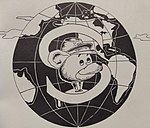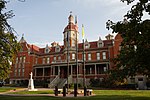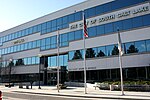Central Pointe station
1999 establishments in UtahBuildings and structures in South Salt Lake, UtahRailway stations in Salt Lake County, UtahRailway stations in the United States opened in 1999TRAX (light rail) stations ... and 3 more
Transportation in Salt Lake County, UtahUTA streetcar stopsUse mdy dates from March 2020

Central Pointe station is a light rail station in South Salt Lake, Utah, in the United States, served by all three lines of the Utah Transit Authority's (UTA) TRAX light rail system. In December 2013, the station also became the western terminus for the S Line (formerly known as Sugar House Streetcar).
Excerpt from the Wikipedia article Central Pointe station (License: CC BY-SA 3.0, Authors, Images).Central Pointe station
West Utopia Avenue,
Geographical coordinates (GPS) Address External links Nearby Places Show on map
Geographical coordinates (GPS)
| Latitude | Longitude |
|---|---|
| N 40.7244 ° | E -111.8969 ° |
Address
Central Pointe
West Utopia Avenue 221
84190
Utah, United States
Open on Google Maps






